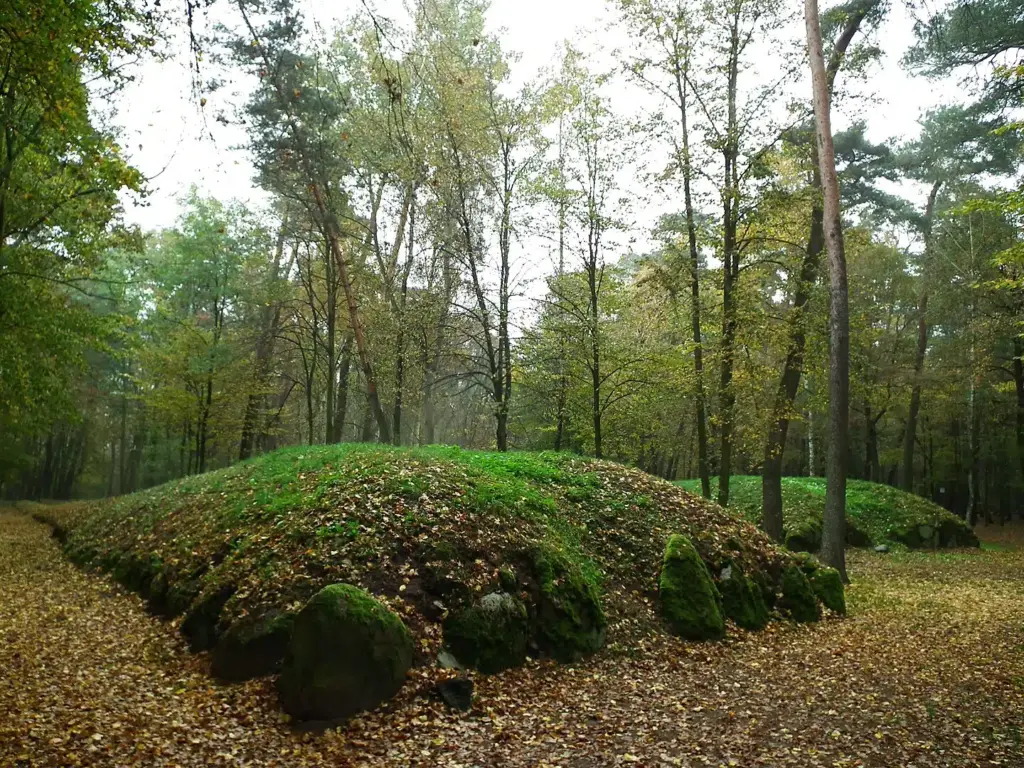 Archaeologists uncover a rare 10th-century wooden mask in Poland’s Lake Lednica, revealing insights into early Slavic beliefs. Credit: Mos810 / CC BY SA 4.0
Archaeologists uncover a rare 10th-century wooden mask in Poland’s Lake Lednica, revealing insights into early Slavic beliefs. Credit: Mos810 / CC BY SA 4.0
An unusual wooden mask carved into a centuries-old oak beam has been found in Lake Lednica, Poland, offering a rare look into the beliefs and creativity of early Slavic people.
A team of archaeologists uncovered the artifact on Ostrów Lednicki, a historic island tied to the origins of the Polish state. Experts say this is the first time a wooden mask of this kind has been discovered in the area. Dated to around the year 967, the find comes from a time when Poland was just beginning to form as a nation.
The carved face was part of a large oak beam, over four feet in length, which likely supported part of the settlement’s fortifications. Measuring roughly 13 by 10 centimeters, the face was created using both flat and raised carving methods, showing signs of careful and skilled work.
Ancient slavic wooden mask unveils spiritual symbolism
What makes the discovery even more intriguing is the direction of the carving—it faces the lake rather than the village. Dr. Andrzej Pydyn from Nicolaus Copernicus University, who led the research, suggests this detail may reflect early Slavic beliefs that spirits lived in water.
This find went beyond what we expected, explained Dr. Pydyn during a recent event at the Museum of the First Piasts in Dziekanowice.
The beam was found during a long-term study that began in 2021. Dry weather conditions that year caused lake levels to drop, revealing old wooden remains along the shore. Using a method that examines tree rings, researchers dated the oak to 967, placing it in the time of the Piast dynasty, when Poland’s first rulers held power.
Rare carving suggests deeper meaning
While small Slavic figurines have been found in other areas, such as Wolin Island, a large carving like this is rare. According to Konrad Lewek of the Centre for Underwater Archaeology, the size and detail of the piece point to a deeper meaning—possibly religious or protective.
Ostrów Lednicki, where the beam was discovered, was once a center of political and religious activity. The site included a residence for local rulers, a chapel with baptismal areas, and strong defensive structures. Historians believe some of the earliest Christian rituals in Poland likely took place there.
The island has been the focus of underwater archaeological work for more than 40 years. Past discoveries include old bridges and medieval weapons, but none have carried the symbolic weight of this carved face.
Display planned after careful preservation
Dr. Andrzej Kowalczyk, head of the Museum of the First Piasts, announced that the artifact will go on public display by late 2026. Until then, preservation experts will work to stabilize the wood to protect its details from damage.
The discovery offers more than just a look at early tools or defenses. It reveals how people of the time expressed their ideas, fears, and hopes through art—giving us a glimpse into their spiritual world as Poland began to take shape.
